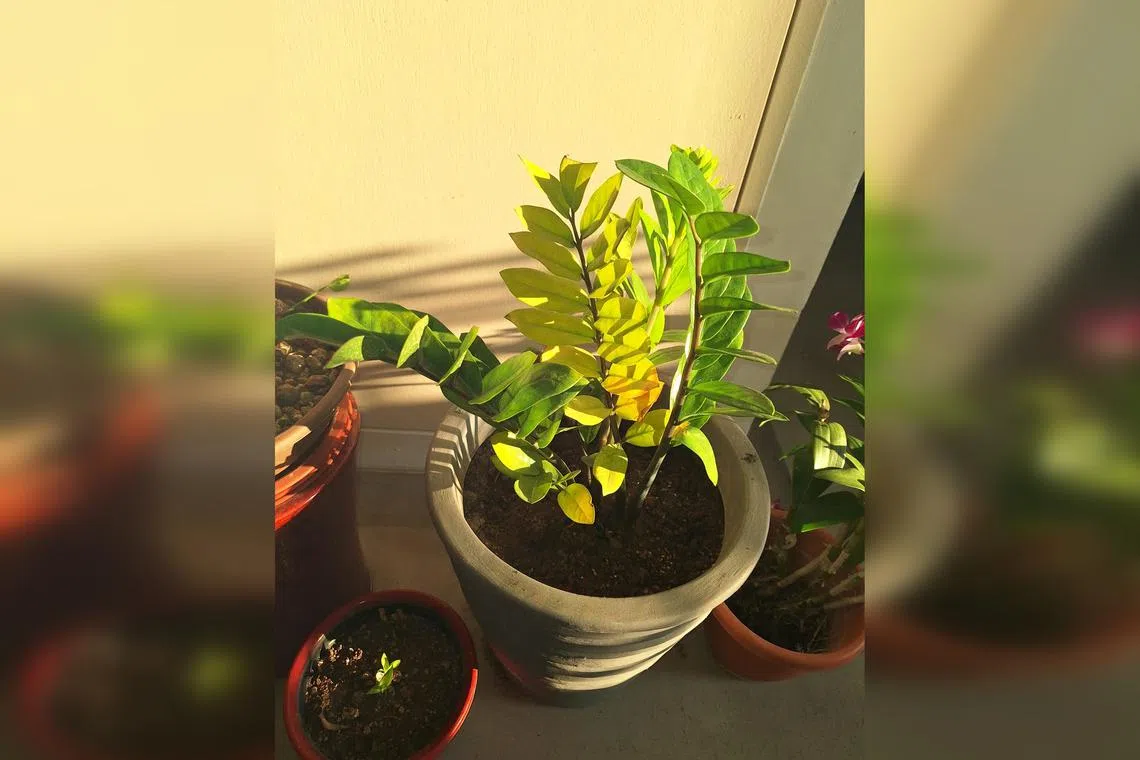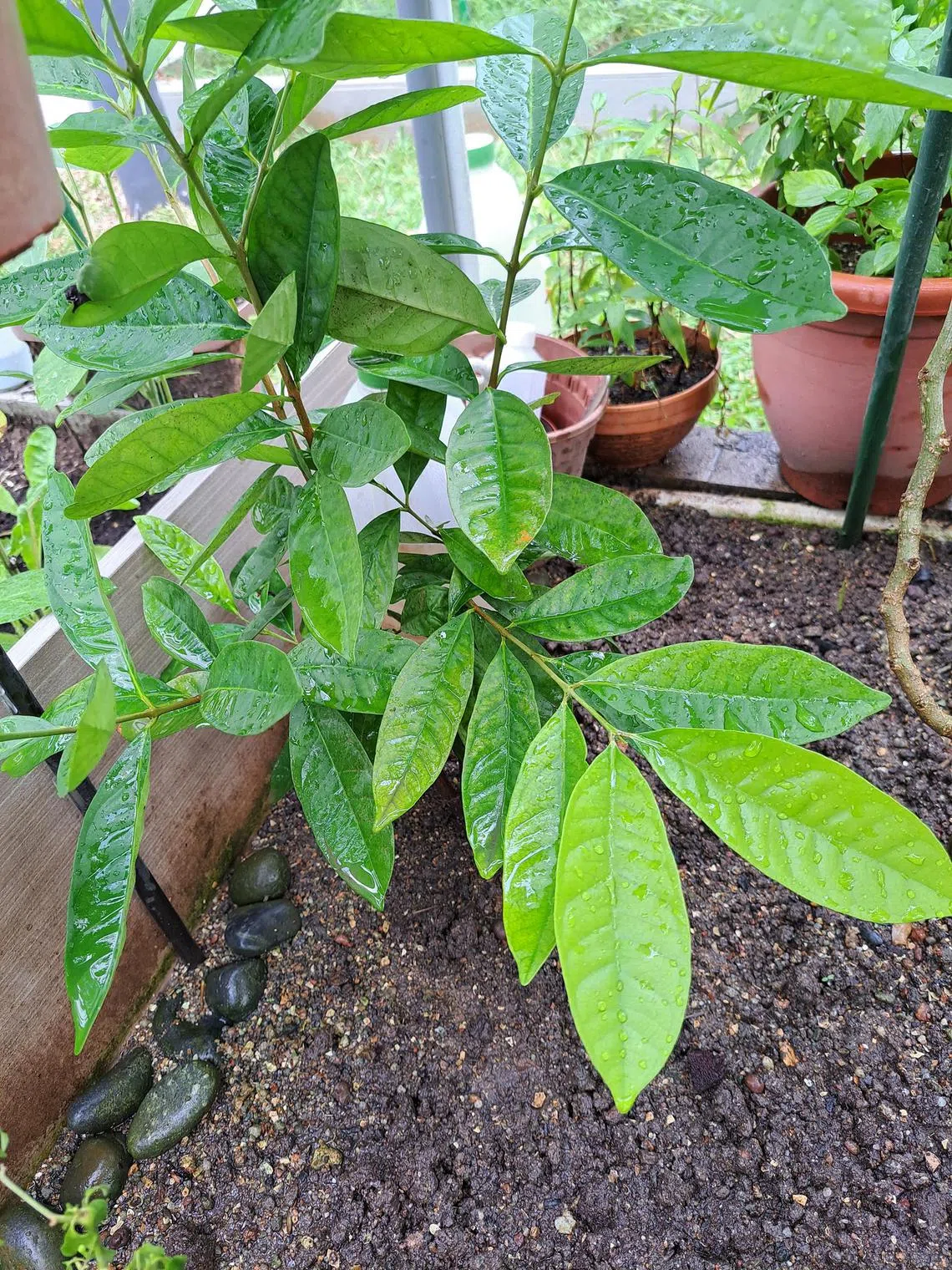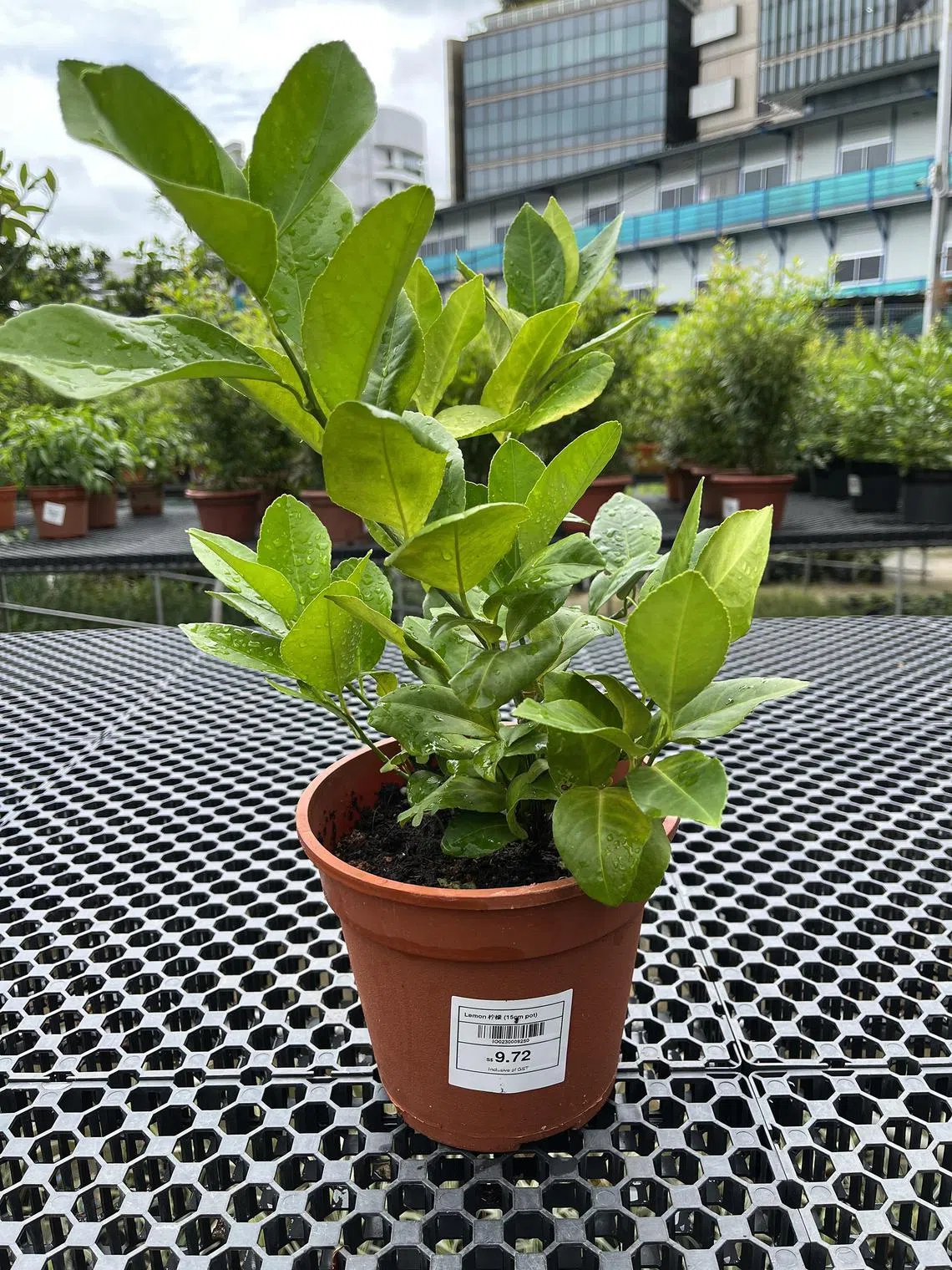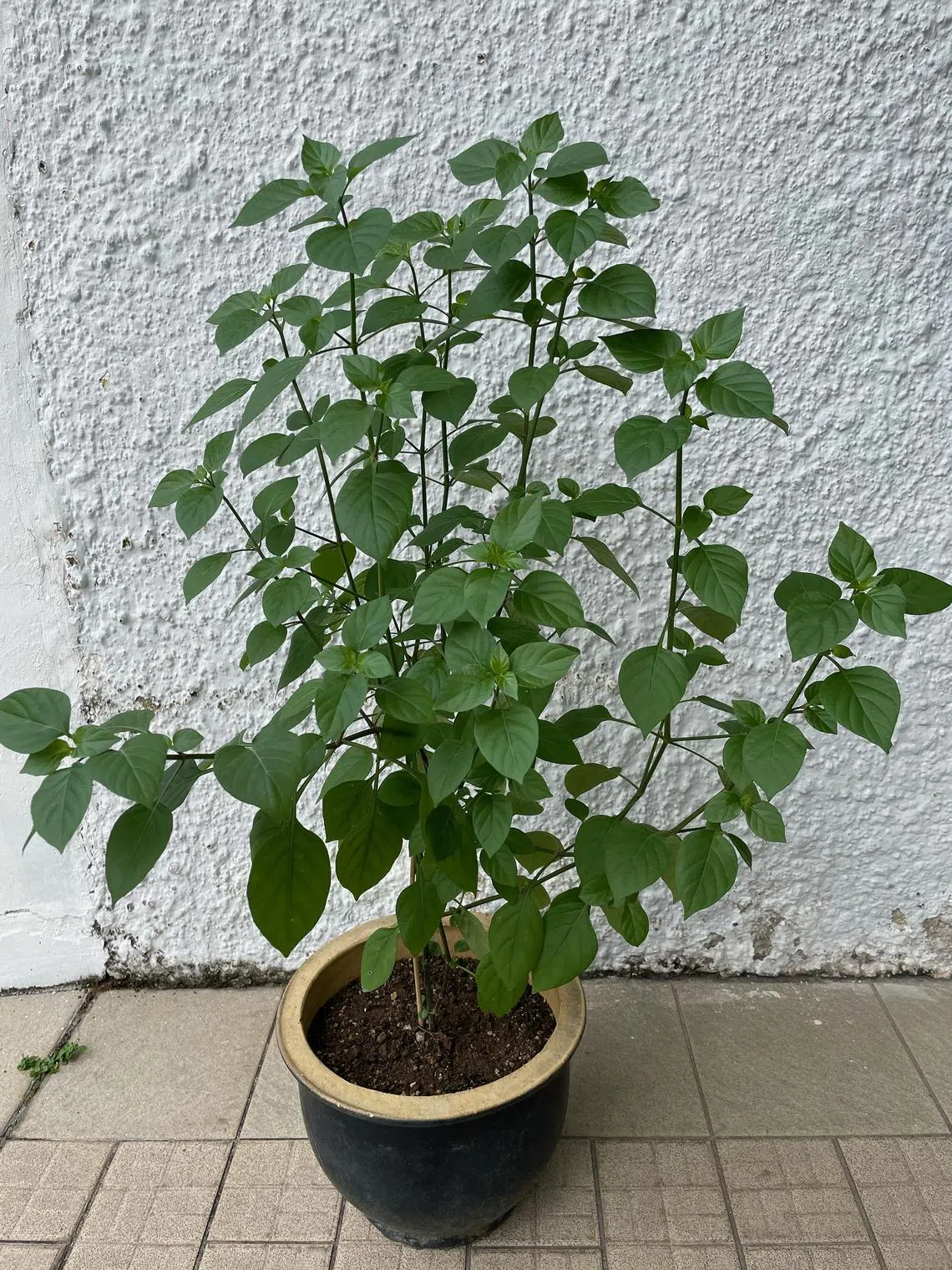Root Awakening: ZZ plant grows best in a semi-shaded spot, dislikes excessive moisture
Sign up now: Get ST's newsletters delivered to your inbox

The soil level in the pot should be aligned with the line where the crown of the ZZ plant and the root system meet.
PHOTO: JASON GOH
Wilson Wong
Follow topic:
ZZ plant should not be exposed to direct sunlight or planted too deeply
I have a plant that is well watered and gets sunlight. However, it seems to keep yellowing. Why is this so?
Jason Goh
Check the cultivar of your plant – is it the “Chameleon”? This cultivar produces bright yellow leaves that will turn green with age. If your plant is the common, all-green version, the yellowing may be due to other reasons.
The ZZ plant (botanical name: Zamioculcas zamiifolia) grows best in a semi-shaded spot where it can get filtered sunlight. Exposure to direct sunlight can cause the leaves to bleach and turn yellow. If this is the case, you may want to move the plant to a more suitable location.
Check to see if your ZZ plant is grown too deeply. The soil level in the pot should be aligned with the line where the crown of the plant and the root system meet. The plant should not be grown too deeply.
Excessive moisture around the crown due to contact with moist growing media can cause the base of the plant to rot and leaves will turn yellow and mushy at the base.
Allow the plant to dry out slightly before watering it again. It should not be growing in a media that is wet all the time as wet feet can cause the roots to suffocate and die.
Young plant is the Indonesian bay leaf tree

The Indonesian bay leaf tree's leaves are used in Indonesian and Malay cuisines.
PHOTO: JANICE TOON
May I know the name of this plant which started to grow in the garden plot?
Janice Toon
The young plant is botanically known as Syzygium polyanthum. It is a native tree that produces the leaf known as Indonesian bay leaf or daun salam. Fresh leaves are used in Indonesian and Malay cuisines.
Note that this plant grows into a large tree. You may want to carefully transplant it to grow in an open space that has soil that is well-draining and provides full sun exposure.
Ensure lemon plant is growing in moist, well-draining growing media and fed adequately

Grow the lemon plant in gritty, aerated and well-draining media to help it thrive.
PHOTO: MARC ONG
I have a lemon plant which I bought around February. Recently, I noticed the plant is not doing well. Its leaves are starting to turn yellow, dry up and drop off. What is the reason for this? The plant gets daily afternoon sun, water about once every two days and fertiliser every two weeks.
Marc Ong
Check the state of the growing media and the health of the plant’s roots. In many store-bought plants, the growing media could be either coconut peat, which breaks down, or heavy clay, which compacts over time.
In such a situation, the plant will suffer from a poor root system. When this happens, the original media will need to be carefully and partially removed and the plant potted up in media that is gritty, aerated and well-draining.
You may want to measure the soil’s pH level. It should be in the slightly acidic range so that nutrients are available for the plant and not locked away.
Also, consider using chemical fertiliser pellets that have the range of nutrients the plant needs for healthy growth. Organic fertiliser may not provide all the nutrients.
Finally, avoid letting the plant dry out totally as this can damage its roots and cause it to wilt. Leaves can turn yellow and fall off.
Plant is the Chinese violet

The Chinese violet, which produces edible leaves, is not related to the wolfberry.
PHOTO: HO WAI MENG
I was given a wolfberry cutting, which I have planted. Is it indeed a wolfberry plant? Are the leaves edible? What is the difference between wolfberry and goji berry or kau kee?
Ho Wai Meng
The plant is commonly called the Taiwanese wolfberry, which can be confusing. It is known by numerous other common names such as Chinese violet, coromandel or creeping foxglove.
The plant is botanically known as Asystasia gangetica and not related to the wolfberry at all. The plant produces leaves that are edible.
The wolfberry plant is a member of the nightshade family Solanaceae. In general, the common names wolfberry, goji berry and kau kee are used interchangeably. Two main species are grown for their edible fruits, namely, Lycium barbarum and Lycium chinense. There are selections that are grown for their edible leaves.
Answers by Dr Wilson Wong, an NParks-certified practising horticulturist and parks manager. He is the founder of Green Culture Singapore and an adjunct assistant professor (Food Science & Technology) at the National University of Singapore.
Have a gardening query? E-mail it with clear, high-resolution pictures of at least 1MB, if any, and your full name to . We reserve the right to edit and reject questions.

